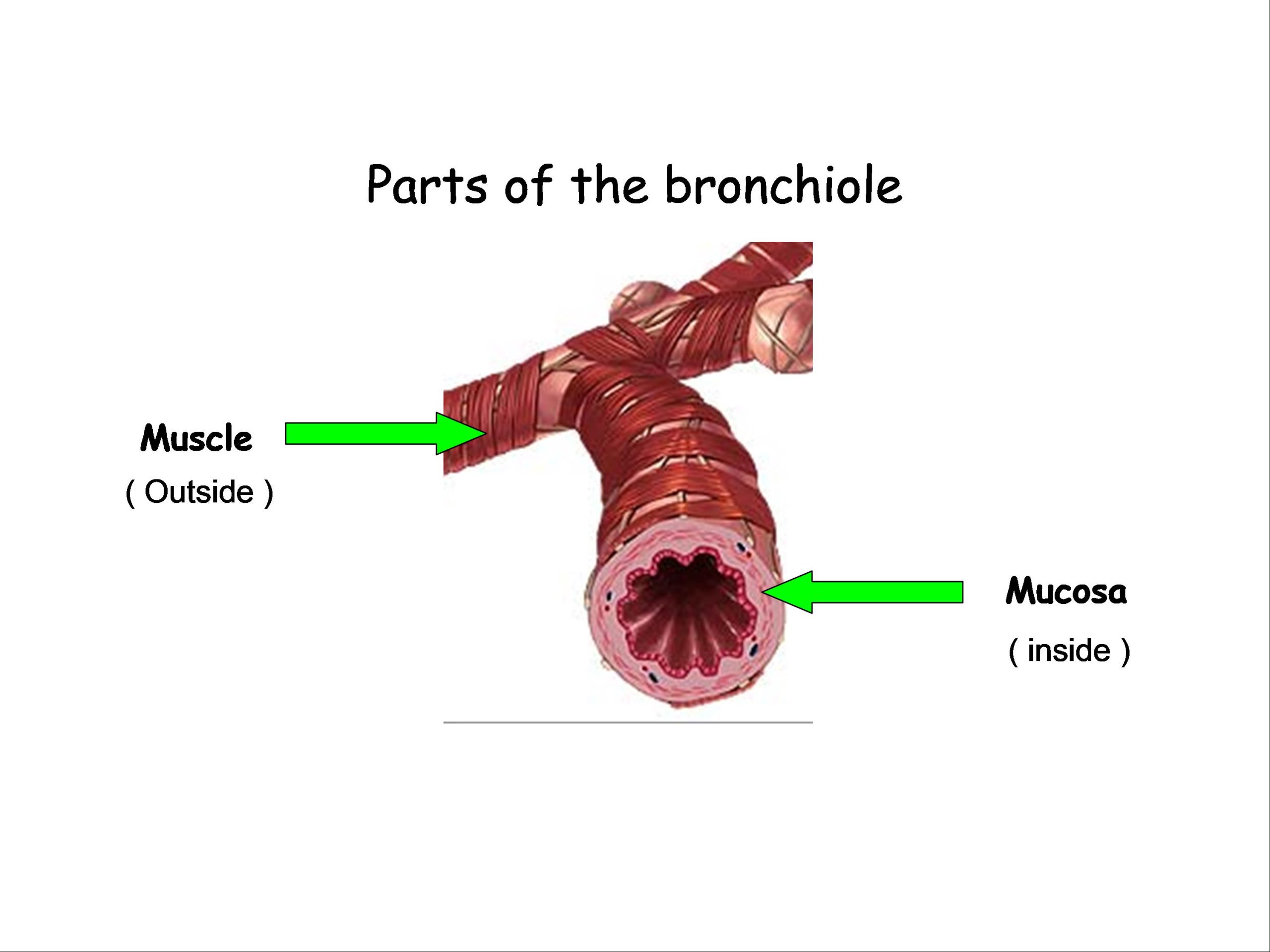The key organ in the respiratory system is the lung, which is shaped like an upside down tree. The windpipe or trachea is like the trunk of a tree.


The trachea branches out to smaller airways called bronchi, and ends up in small air sacs known as alveoli.
The bronchi and bronchiole is surrounded by smooth muscles, just like the way bark wraps around a tree. The inside layer of the airway is called the mucosa. It keeps the airway moist and clean.
What is a wheeze and how is does it occur?
A wheeze is a high pitched musical sound heard during expiration. It occurs when air does not flow smoothly through the airways. This can be as a result of:
- Tightening of the smooth muscle surrounding the airway ( bronchoconstriction )
- Swelling of the mucosa ( inflammation )
- Obstruction from secretions.
Infants and young children are more prone to wheezing episodes because their airways are of smaller diameter and easily collapsible when compared to an adult airway.
What are the causes wheezing in children?
In very young infants wheezing may be associated with Gastroesophageal Reflux (GOR). 65% all healthy infants may have some degree of GOR but most thrive well without any symptoms. A small percentage of babies with significant GOR may present with recurrent wheezing.
Occasionally infants and toddlers mouthing small objects or given foods e.g. nuts may inhale these substances and it may lodge in the airway. Often there is a history of choking prior to onset of wheezing. A radiograph of the chest may be necessary when this is suspected.
The commonest cause of wheezing in infants and toddlers are caused by respiratory viruses e.g. Respiratory Syncytial Virus (RSV), Rhinovirus, Influenza. These cause the inner airway (mucosa) to become swollen and fill with mucus causing obstruction and results in what is called Bronchiolitis. It is estimated that about 30 % of all children will have an episode of wheezing from viral infections before they are 3 years old. Children with Pneumonia may also have wheezing in addition to cough and phlegm.
It is possible for children to develop wheezing with recurrent airway infections or lung infections. However if it is solely due to the infection then once they have recovered there should not be any wheezing in the interval between the infections.
Wheezing can occur as an allergic response to medications or certain foods especially when introduced for the first time. When it does, the onset is acute and can be life threatening. Seek medical attention immediately.
When is it Asthma?
A child is diagnosed to have Asthma when there is a history of recurrent episodes of wheezing associated with cough particularly nocturnal cough and cough during activity. The severity of the condition varies in children who are affected.
In an asthma attack there will be chest tightness and difficulty breathing as well. In children asthma attacks are usually triggered by respiratory tract infections. However there are many other triggers for asthma. These include dust mites, mold, pollen, animal dander, perfume, dust, car exhaust and cigarette smoke. Parents who smoke and whose children have been diagnosed with Asthma should not smoke in their house or in their car. Also as traces of tobacco particles may remain on clothing it is advised to shower and change clothing before they hug / carry their children. Of course it would be better to give up smoking for good.
There is no single cause for asthma. A child is at increased risk for developing Asthma if there is a family history of Asthma and allergic conditions like eczema and allergic rhinitis
How is wheezing treated?
It really depends on the cause of wheezing. When wheezing is caused by viral infections treatment is symptomatic. Infants and younger children may take a longer time to recover from Bronchiolitis.
For recurrent wheezing it is important for parents to work together with their child’s Paediatrician if their child’s symptoms have not resolved with the first diagnosis or treatment.
If a diagnosis of Asthma has been made it is managed with medications and the avoidance of triggers. Asthma is a chronic condition and treatment is aimed at controlling the disease and preventing attacks. Anti-inflammatory medications are usually prescribed together with a bronchodilator to give immediate relief during asthma attacks.











